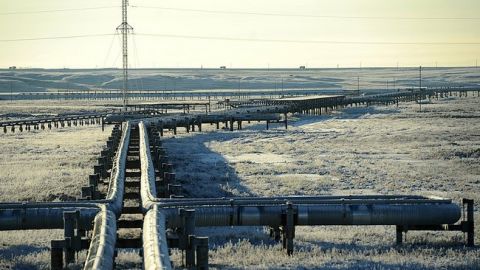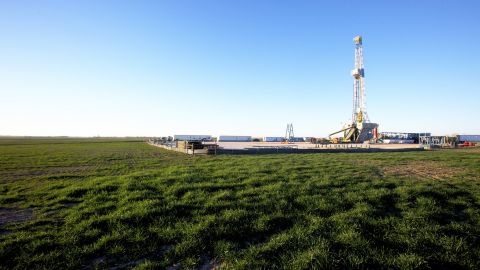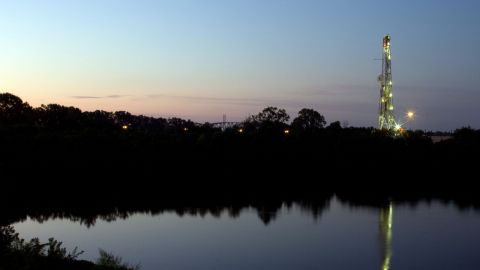Urban Heat Islands Face Rising Temperatures This Summer and Beyond

Source: Stefan Wagener
The summer of 2022 is set to be the fifth hottest summer on record, with the western and southwestern United States experiencing temperatures up to 10 degrees Fahrenheit higher than 1970 averages. With more people suffering from heat fatigue, heat-related heart disease and allergies than ever before, the ongoing climate warming will affect more than just the air conditioning bill.
Urban heat islands — areas primarily composed of roads and infrastructure that absorb heat — trap heat up to seven degrees Fahrenheit hotter than in outlying areas, according to the Center for Climate and Energy Solutions. Air pollution and heat illness also are found to be more severe in urban heat islands.
Summers in the United States have been steadily heating up with 81% of studied locations observing temperatures at least seven degrees higher than normal, according to the nonprofit research group Climate Central.
Severely affected locations include Reno and Las Vegas, Nevada, and Boise, Idaho.
Since 1978, more than 11,000 Americans have died from heat-related illness, according to the Environmental Protection Agency. Statistics, however, can tell only part of the story. It has been noted that “extreme heat contributes to far more deaths than the official death certificates might suggest.”
Extreme heat is a greater hardship in areas where tree cover is lacking — such as low-income neighborhoods, where people of color often reside.
Three elderly women were found deceased last month in a senior facility in Chicago, Illinois, where there was no working air conditioning and the indoor temperature reached 102 degrees Fahrenheit. Vulnerable groups like the elderly may not have caregivers or may be unable to pay air conditioning bills on their own.
A study of 1,056 counties containing about 300 million Americans found “significant racial urban heat disparities” in 71% of these counties. In Tucson, Arizona, Latino neighborhoods are 4 to 5 degrees Fahrenheit hotter than the city’s average due to a disproportionate lack of tree cover.
One day of extreme heat was linked to a 0.27% increase in heart disease deaths among Black people. A significant increase in cardiac incidents was also found in men, according to a news release from the American College of Cardiology.
The urban heat island effect is difficult to eliminate due to high population density in cities and urbanized areas. But local efforts can be made to mitigate it.
Voluntary efforts like urban forestry programs can help close the temperature gap between wealthy and poor neighborhoods. For example, the City of Las Vegas Tree Initiative was announced by Mayor Carolyn G. Goodman in April to combat the urban heat island effect in the city. The city aims to plant 60,000 trees by 2050.
However, these planned tree canopies are faced with water shortages and temperature increases. City officials will need to study heat-tolerant tree species and choose those most likely to survive in areas like Las Vegas, Phoenix and Chicago.
Green roofs can provide cooling effects as well as collecting rainwater and absorbing pollutants to improve air quality. An initiative in the District of Columbia, the RiverSmart Rooftops Green Roof Rebate Program, was started in 2006 to “promote the voluntary installation of green roofs.” The program offers a rebate of $15 per square foot of green roof. As a result, D.C. led the country in green roof coverage with more than 3 million square feet of registered green roofs as of 2018.
Experts warn residents — especially infants, elderly and pregnant women — to stay hydrated, use fans and take advantage of local assistance like free air conditioning units, according to the Natural Resources Defense Council.
Increasing temperatures also result in extreme storms and sea level elevations that cause global harm to marine life and humans, said Lauren Gaches, the Director of Public Affairs for the National Oceanic and Atmospheric Administration Fisheries.
“An unprecedented marine heat wave dominated the northeastern Pacific from 2013 to 2017 and upended ecosystems across a huge swath of the Pacific Ocean, causing fishery collapses and fishery disaster declarations up and down the coast,” said Gaches in an email.
With climate change disturbing the ability of marine life to adapt to warm sea temperatures, places that depend on mariculture for food will be at risk.
Gaches said climate change may lead to more frequent marine heat waves in the future. She wrote, “Climate change is causing significant impacts to the Earth’s oceans, marine life, and ecosystems, as well as the many communities and economies that depend on them.”
For more information, see the companion “Tip of the Iceberg” podcast episode here.

























